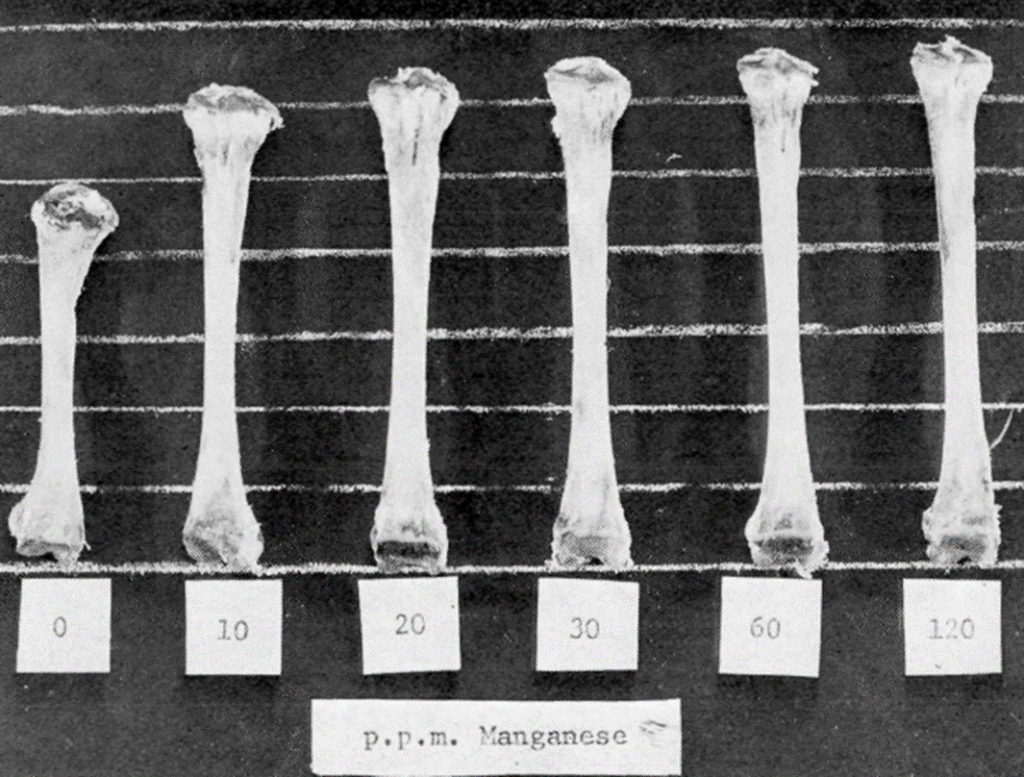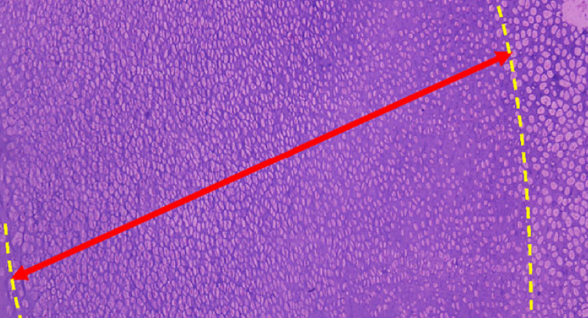> 1 Figure
1937
In 1937 researchers from the Department of Poultry Husbandry at Cornell University published the first paper on the role of manganese in the prevention of perosis, an anatomical deformity of the leg bones. Naturally present in some feed ingredients such as phosphates and grains or supplemented, the presence of Mn prevented the incidence of perosis. Mn deficiency is accompanied by slipped tendon, increased tibia thickness and decreased tibia length.
It was later shown that Mn deficiency specifically affects the matrix mucopolysaccharide (proteoglycan) fraction in epiphyseal cartilage, mainly composed of chondroitin sulfate. Under-supply of Mn decreases the total hexosamine content of epiphyseal cartilage, largely due to a reduction in the galactosamine fraction. Manganese is a co-factor of enzymes (galactosyl-transferase, polysaccharide polymerase) involved in the synthesis of proteoglycan.
The growth plate is the base of tibia development. Tibial longitudinal growth links to multiplication, differentiation and apoptosis of cells in cartilage (chondrocytes).
During the development of growth plate, manganese deficiency results in inhibition of chondrocyte proliferation, promotion of chondrocyte apoptosis, and reduction of the width of the proliferative zone.




